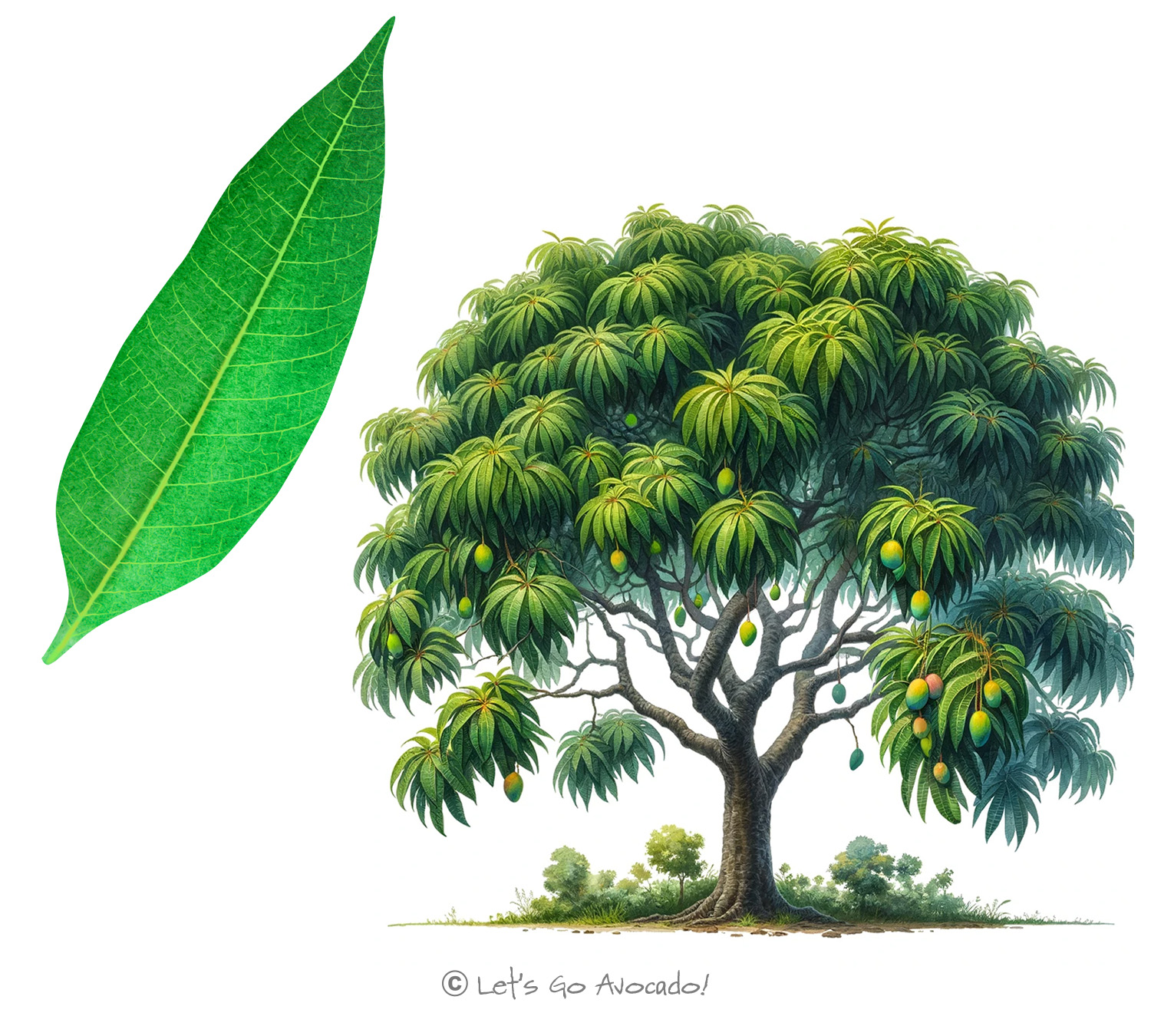The Mango Tree: A Tropical Treasure
Welcome to the vibrant world of the Mango tree, known scientifically as Mangifera indica. Revered for its succulent fruit, the Mango tree is a symbol of the tropics, flourishing in warm climates around the world. Originating from South Asia, this tree has become a beloved feature in tropical and subtropical regions, celebrated not only for its delicious fruit but also for its ecological and cultural significance. Let’s discover the many facets of the Mango tree and its role in both nature and human life.
Identifying the Mango Tree
The Mango tree is known for its lush, dense canopy and broad, dark green leaves that turn a stunning red or purple as they develop. Its small, white, fragrant flowers bloom in large clusters, setting the stage for the fruit that is eagerly awaited by people and wildlife alike. The mango fruit varies in size, shape, and color, but it is always delightfully sweet and juicy.
Size and Structure
Mango trees are impressive in size, often reaching heights of 30-100 feet (9-30 meters). Their canopies are equally expansive, providing generous shade. This grandeur makes the Mango tree a striking presence in landscapes, offering both beauty and practical benefits.
Growth and Life Cycle
The life cycle of the Mango tree is a journey from flower to delectable fruit. After the flowering stage, the tree produces mangoes that mature over several months. These fruits are key to the tree’s reproduction, as they contain seeds that can grow into new Mango trees. The tree thrives in warm, tropical climates with well-drained soil, and it can bear fruit for many years, sometimes over a century.
Ecological Role
In its natural and cultivated habitats, the Mango tree serves as a vital source of nourishment for various animals, including birds, bats, and insects. Its extensive root system helps prevent soil erosion, particularly in tropical climates. The tree’s canopy offers a habitat for numerous bird species, contributing to biodiversityBiodiversity refers to the variety of living things in an ecosystem. The more biodiversity there is in an ecosystem, the healthier and stronger it is. Learn More.
Resilience and Adaptability
While the Mango tree prefers tropical climates, it has shown remarkable adaptability and can now be found in various subtropical regions. It can withstand temporary waterlogging and droughtDrought is when a place doesn’t get enough rain for a really long time. It’s like having a super dry and parched period where there’s not enough water for plants, animals, or people. Droughts can be tough because they can lead to water shortages, affect farming, and impact the environment, making it harder for everything to thrive. Learn More, making it resilient to some environmental challenges.
Cultural and Economic Importance
The Mango tree holds a special place in many cultures, often symbolizing love and prosperity. The fruit is a staple in cuisines worldwide and is celebrated in festivals and rituals. Economically, mangoes are a significant source of income for many tropical countries, making the Mango tree an invaluable agricultural asset.
The Mango tree, with its delicious fruit and lush foliage, is a beloved icon of the tropics. It enriches the environment and delights the senses, offering shade, beauty, and nourishment. As we enjoy the sweet bounty of the Mango tree, let’s appreciate its contributions to ecosystemsAn ecosystem is a community of living organisms, like insects and birds, and non-living components, like water and rocks, that interact with each other in a specific area. Learn More, cultures, and economies around the world. The Mango tree is not just a provider of fruit; it’s a vital part of the landscapes it inhabits, supporting a diverse array of life and adding to the richness of our natural world.










